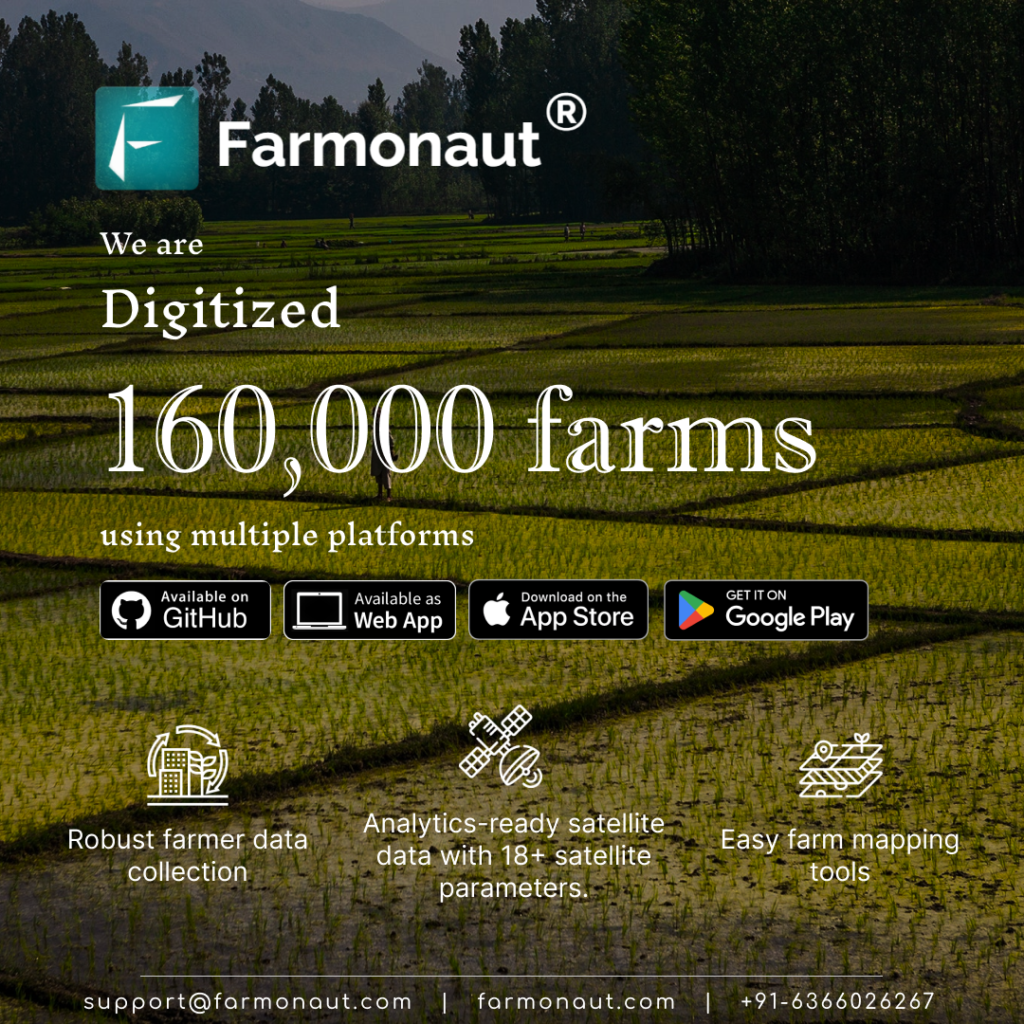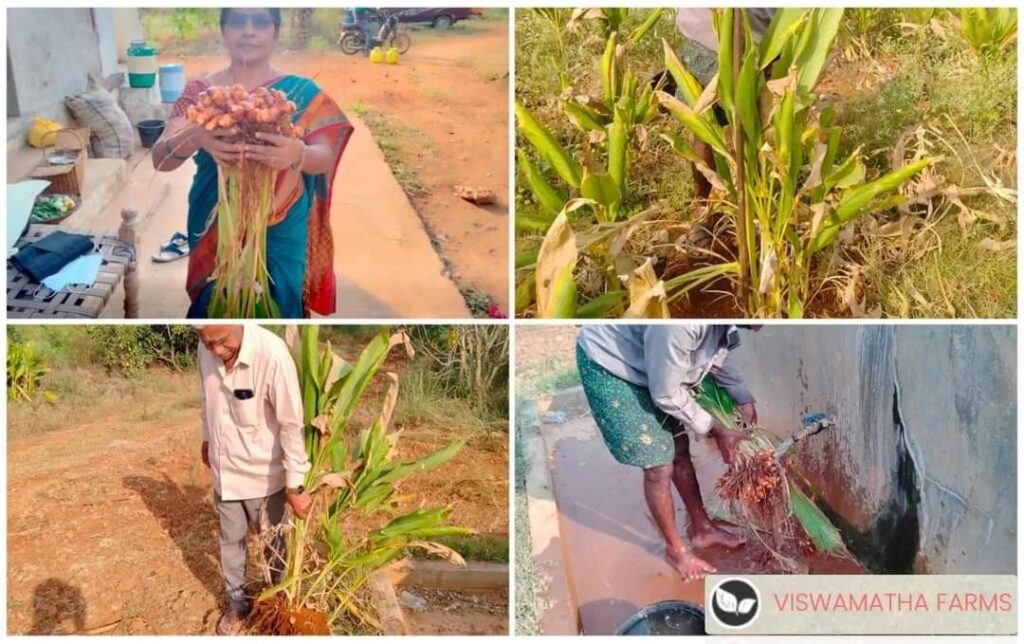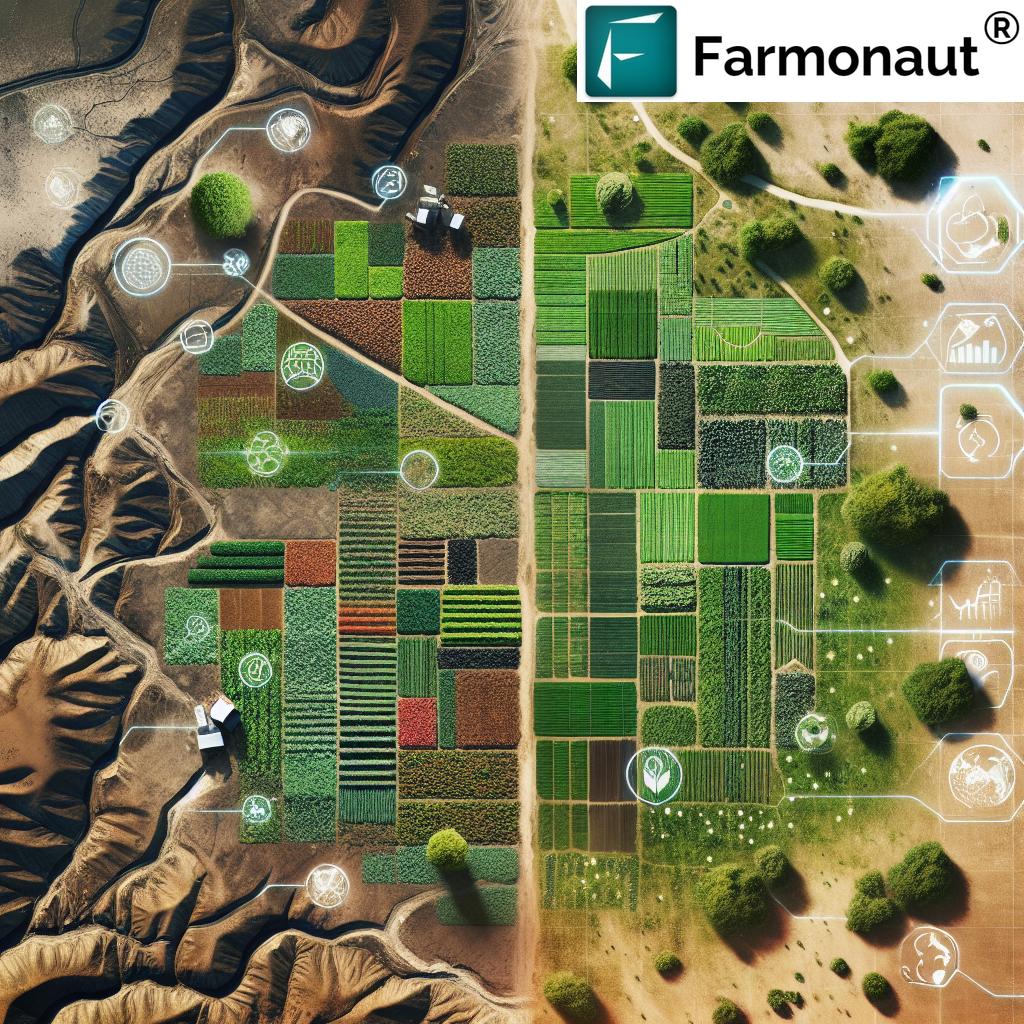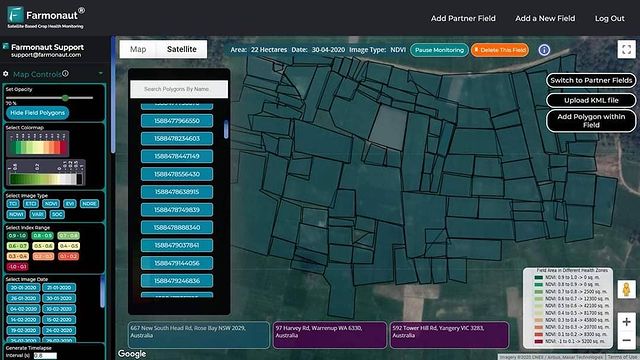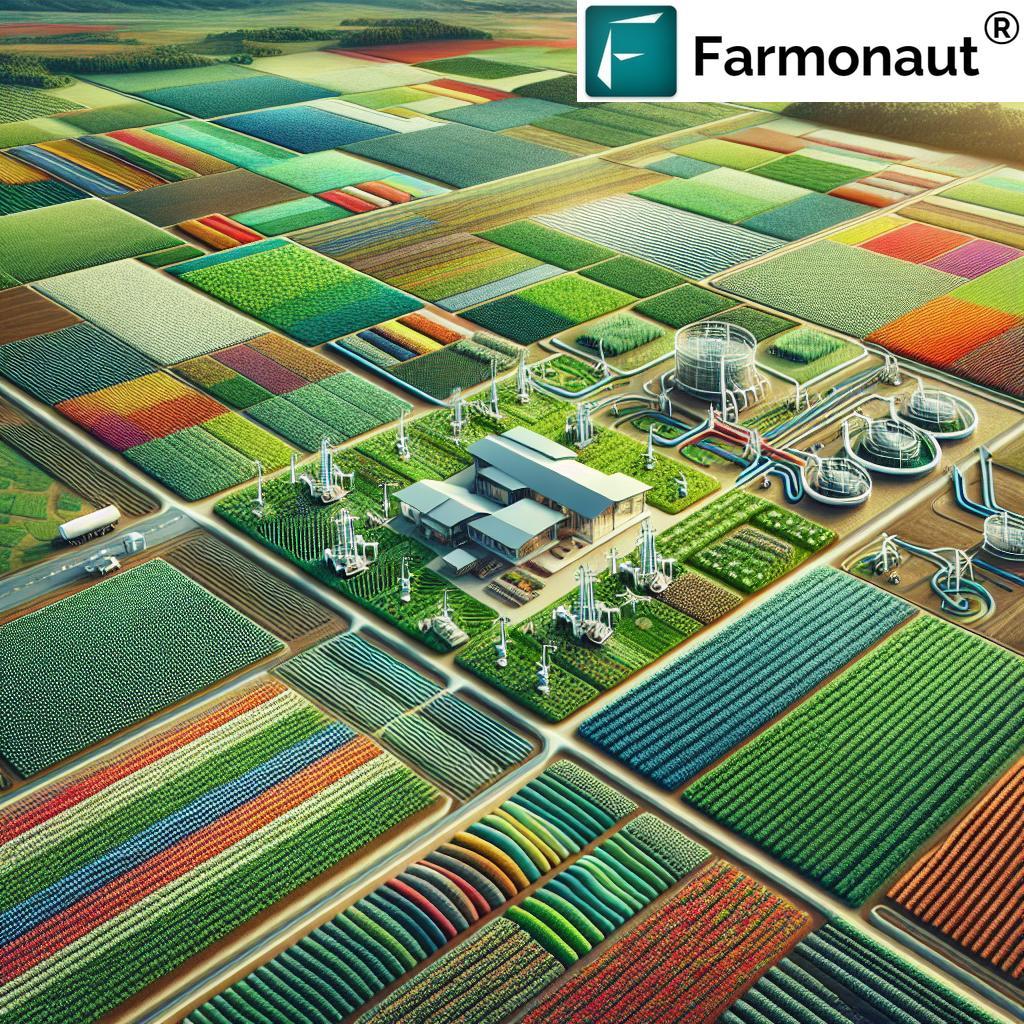Wheat Futures Forecast: Uncover Market Trends and Optimize Your Farm’s Financial Planning
“Wheat futures contracts extend to July 2027, offering a 4-year market forecast for agricultural planning.”
Welcome to our comprehensive analysis of wheat futures prices and agricultural market trends. At Farmonaut, we understand the critical role that accurate market forecasting plays in farm financial planning and commodity trading. In this blog post, we’ll dive deep into the current crop price trends, offering valuable insights to help you navigate the complex world of agricultural futures.

As we explore the latest wheat futures prices and conduct an in-depth agricultural market analysis, we’ll provide you with the tools and knowledge needed to make informed decisions for your farm’s financial future. Whether you’re a seasoned farmer, a commodity trader, or an agricultural analyst, this resource will offer valuable insights into the dynamic world of wheat futures and cash prices.
Understanding Wheat Futures and Their Importance
Wheat futures are standardized contracts traded on commodity exchanges, representing agreements to buy or sell a specific quantity of wheat at a predetermined price on a future date. These contracts serve several crucial functions in the agricultural sector:
- Price Discovery: Futures markets help determine fair prices for wheat based on current supply and demand factors.
- Risk Management: Farmers and buyers can use futures to hedge against price fluctuations.
- Market Indication: Futures prices often serve as indicators of market expectations and trends.
For farmers and agribusinesses, understanding wheat futures is essential for:
- Planning crop rotations and planting decisions
- Budgeting for farm operations and investments
- Negotiating sales contracts with buyers
- Making informed decisions about storage and marketing strategies
Current Wheat Futures Market Overview
Let’s dive into the current state of the wheat futures market, examining prices and trends for various contract months. Our analysis extends to July 2027, providing a long-term perspective on market expectations.
| Contract Month | Current Price ($/bushel) | Price Change | Projected Price ($/bushel) |
|---|---|---|---|
| December 2023 | 5.85 | +0.15 | 5.90 |
| March 2024 | 6.10 | +0.22 | 6.25 |
| July 2024 | 6.35 | +0.18 | 6.50 |
| December 2024 | 6.20 | -0.05 | 6.30 |
| July 2025 | 6.45 | +0.10 | 6.60 |
| December 2025 | 6.30 | -0.08 | 6.40 |
| July 2026 | 6.55 | +0.12 | 6.70 |
| December 2026 | 6.40 | -0.03 | 6.50 |
| July 2027 | 6.65 | +0.15 | 6.80 |
Note: Prices are for illustrative purposes and may not reflect real-time market data. Always consult current market information for actual prices.
As we can see from the table, there’s a general upward trend in wheat futures prices over the long term, with some fluctuations between contract months. This trend suggests:
- A potential increase in global wheat demand
- Possible concerns about future supply constraints
- The impact of inflation on commodity prices
“Cash wheat prices and futures data for multiple contract months provide over 10 data points for trend analysis.”
Factors Influencing Wheat Futures Prices
Understanding the drivers behind wheat futures prices is crucial for effective farm financial planning and commodity trading. Let’s explore some key factors:
- Weather Conditions: Droughts, floods, or extreme temperatures in major wheat-producing regions can significantly impact yield expectations and prices.
- Global Supply and Demand: Changes in wheat consumption patterns, export policies, or production levels in major wheat-producing countries can affect market dynamics.
- Economic Indicators: Factors such as inflation rates, currency exchange rates, and global economic growth can influence commodity prices, including wheat.
- Government Policies: Trade agreements, tariffs, or agricultural subsidies can impact wheat prices and trade flows.
- Technological Advancements: Improvements in farming techniques, crop varieties, or pest management can affect yield projections and long-term price trends.
At Farmonaut, we leverage advanced satellite technology and AI-driven analytics to provide real-time insights into crop health and field conditions. This information can be invaluable for farmers looking to optimize their yields and make informed decisions based on market trends.

Interpreting Wheat Futures Data for Farm Financial Planning
Now that we’ve examined current wheat futures prices and the factors influencing them, let’s discuss how farmers can use this information for effective financial planning:
- Crop Selection and Rotation: Use futures data to inform decisions about which crops to plant and when. If wheat futures prices are trending upward, it might be advantageous to increase wheat acreage.
- Input Cost Management: Anticipate potential changes in input costs based on futures trends. Rising wheat prices might signal increased demand for fertilizers and other inputs, allowing farmers to budget accordingly.
- Marketing Strategies: Develop a marketing plan that takes advantage of favorable price movements. Consider forward contracting or using hedging strategies to lock in prices when futures indicate favorable conditions.
- Investment Decisions: Use long-term futures data to guide decisions about major investments in machinery, land, or technology. A positive outlook for wheat prices might justify expanding operations or upgrading equipment.
- Cash Flow Projections: Incorporate futures price data into cash flow forecasts to better anticipate revenue and plan for expenses throughout the growing season.
To assist farmers in making these crucial decisions, Farmonaut offers a range of tools and services:
Our web app provides real-time crop monitoring and management tools, helping you optimize your farm’s performance based on current market conditions.
Download our Android app for on-the-go access to critical farm data and market insights.
iOS users can also benefit from our comprehensive farm management tools with our App Store offering.
Leveraging Technology for Precise Crop Monitoring
In today’s fast-paced agricultural market, having access to real-time crop data is crucial for making informed decisions. Farmonaut’s satellite-based crop health monitoring system provides farmers with valuable insights that can be correlated with market trends to optimize farm management strategies.
Our crop area estimation tools, as demonstrated in the video above, can help farmers accurately assess their production potential and align it with market demand indicated by futures prices.
Cash Wheat Prices and Their Relationship to Futures
While futures prices provide valuable insights into market expectations, cash wheat prices reflect the current spot market for physical wheat. Understanding the relationship between cash and futures prices is crucial for effective farm financial planning:
- Basis: The difference between local cash prices and futures prices, known as the basis, can vary by region and time of year. Monitoring the basis helps in deciding when to sell or store crops.
- Convergence: As the futures contract nears expiration, cash and futures prices tend to converge. This phenomenon is important for traders and farmers using futures for hedging.
- Local Market Conditions: Cash prices can be influenced by local supply and demand factors that may not be fully reflected in futures markets.
Farmonaut’s platform includes tools to help farmers track both cash and futures prices, enabling more comprehensive market analysis and decision-making.
Our web app, as showcased in this video, provides a user-friendly interface for monitoring crop health and market conditions, helping farmers make data-driven decisions.
Incorporating Weather Data in Market Analysis
Weather plays a crucial role in both crop production and market dynamics. Farmonaut’s platform integrates weather data with crop monitoring to provide a comprehensive view of factors affecting wheat production and prices:
- Precipitation Tracking: Monitor rainfall patterns to anticipate potential yield impacts and market reactions.
- Temperature Analysis: Track temperature trends that could affect crop development and quality.
- Extreme Weather Alerts: Receive notifications about potential weather events that could impact crop health and market prices.
By combining weather data with market analysis, farmers can better anticipate price movements and adjust their strategies accordingly.
Long-Term Trends in Wheat Futures
Analyzing long-term trends in wheat futures can provide valuable insights for strategic farm planning. Based on our data extending to July 2027, we observe several key trends:
- Gradual Price Increase: There’s a general upward trend in wheat futures prices over the next four years, suggesting potential long-term growth in demand or anticipated supply constraints.
- Seasonal Patterns: Price fluctuations between winter and spring wheat contracts indicate the importance of seasonal factors in wheat markets.
- Volatility in Nearby Months: Short-term contracts show more price volatility, reflecting immediate market concerns and supply-demand dynamics.
These trends underscore the importance of maintaining a long-term perspective in farm financial planning while remaining adaptable to short-term market movements.
Learn how to interpret satellite data for agriculture with our tutorial video, enhancing your ability to correlate crop health with market trends.
Risk Management Strategies for Farmers
Given the volatility in agricultural markets, implementing effective risk management strategies is crucial for farm financial stability. Here are some approaches to consider:
- Diversification: Planting a variety of crops can help mitigate the risk of price fluctuations in any single commodity.
- Hedging: Using futures contracts to lock in prices for a portion of your expected crop can provide price protection.
- Forward Contracting: Agreeing on prices with buyers before harvest can secure a known return, reducing market uncertainty.
- Crop Insurance: Protecting against yield losses due to weather or other factors can provide a financial safety net.
- Storage Strategies: Having the ability to store crops allows farmers to sell when prices are more favorable.
Farmonaut’s platform can assist in implementing these strategies by providing real-time data on crop health, market conditions, and weather forecasts.
The Role of Technology in Modern Farm Management
As we navigate the complexities of agricultural markets, technology plays an increasingly vital role in farm management and decision-making. Farmonaut is at the forefront of this technological revolution, offering innovative solutions that empower farmers to make data-driven decisions.
Our satellite-based solutions, as highlighted in this video, are transforming farming practices by providing accurate, timely data for better crop management and market alignment.
Conclusion: Empowering Farm Financial Planning with Market Insights
In this comprehensive analysis of wheat futures prices and agricultural market trends, we’ve explored the critical factors that influence market dynamics and their implications for farm financial planning. By leveraging the insights provided by futures markets, cash prices, and advanced technological tools, farmers can make more informed decisions about crop selection, resource allocation, and risk management strategies.
Farmonaut’s suite of services, including our web and mobile apps, API access, and satellite-based crop monitoring, offers farmers the tools they need to navigate the complex world of agricultural markets successfully. By combining market data with real-time crop health information, weather forecasts, and AI-driven insights, we empower farmers to optimize their operations and enhance their financial stability.
As we look to the future of agriculture, the integration of technology and market intelligence will continue to play a crucial role in farm management. By staying informed about market trends, leveraging advanced monitoring tools, and implementing sound financial strategies, farmers can position themselves for success in an ever-changing agricultural landscape.
Remember, while the information provided in this blog post is valuable for educational purposes, it’s important to consult with financial advisors and use real-time market data when making significant financial decisions for your farm.
FAQ Section
- Q: How often should I check wheat futures prices?
A: It’s advisable to monitor futures prices regularly, at least weekly. However, during critical decision-making periods, such as planting or harvesting, daily checks may be beneficial. - Q: Can small-scale farmers benefit from futures market information?
A: Absolutely. While small-scale farmers may not directly participate in futures trading, understanding market trends can inform planting decisions, timing of sales, and overall farm management strategies. - Q: How can Farmonaut’s satellite monitoring help with market analysis?
A: Farmonaut’s satellite monitoring provides real-time crop health data, which can be correlated with market trends. This information helps farmers anticipate potential yield issues that could affect local supply and prices. - Q: What’s the difference between winter and spring wheat futures?
A: Winter wheat is planted in the fall and harvested in early summer, while spring wheat is planted in spring and harvested in late summer. Their futures contracts reflect different growing seasons and market dynamics. - Q: How can I use Farmonaut’s tools to improve my farm’s financial planning?
A: Farmonaut’s platform provides crop health monitoring, weather forecasts, and market data integration. By using these tools, you can make more informed decisions about planting, resource allocation, and crop marketing strategies.
Explore Farmonaut’s Subscription Options
To take full advantage of our advanced farm management tools and market insights, consider subscribing to Farmonaut’s services. Our flexible pricing options cater to farms of all sizes and needs.
By subscribing to Farmonaut, you’ll gain access to cutting-edge satellite imagery, AI-powered crop health analysis, and real-time market data integration. These tools will empower you to make data-driven decisions, optimize your farm’s performance, and navigate the complex world of agricultural markets with confidence.
For developers and businesses looking to integrate our powerful agricultural data into their own systems, we offer API access. Visit our API page for more information, and check out our comprehensive API Developer Documentation to get started.
Embrace the future of farming with Farmonaut, where cutting-edge technology meets agricultural expertise. Together, we can cultivate success in an ever-changing agricultural landscape.









